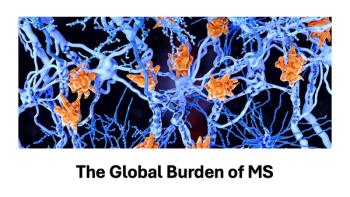
VA Hospital Improves Timeliness of HCC Diagnosis, Treatment With Electronic Tracking System
The introduction of an electronic tracking system decreased the time from hepatocellular carcinoma (HCC) diagnosis to treatment by more than a month.
Care delays for hepatocellular carcinoma (HCC) can occur due to the required complex care coordination. However, improved HCC diagnosis, care coordination and treatment is possible with a tracking system,
The authors were researchers from the Yale University School of Medicine, and they reviewed the tracking system at the Veterans Affairs Connecticut Healthcare System (VACHS). While the VA health system is the largest single care provider in the United States to patients with chronic liver disease, the patient population also includes individuals with psychosocial comorbidities that can cause treatment delays.
“We began to observe declines in HCC after the development of highly effective treatments for hepatitis C virus,” author Amanda Ivatorov, a student at Yale University, explained during a presentation of the abstract. “But HCC cases are expected to increase alongside the rising incidence of cirrhosis due to fatty liver disease. In fact, fatty liver disease is the fastest growing cause of HCC in liver transplant candidates.”
The VACHS implemented a web-based, electronic medical record–linked tacking system that could improve the timeliness of HCC diagnosis and care by flagging abnormal imaging results. The study included 60 patients who were diagnosed with HCC in the 37 months prior to the tracking system and compared them with 127 patients diagnosed in the 71-months (minus an 11-month grace period) after the system was implemented.
For the analysis, the researchers adjusted for age, race, Hispanic ethnicity, state of residence, Barcelona Clinic Liver Cancer (BCLC) stage at diagnosis, and indication for first abnormal imaging.
The post-intervention group had an adjusted mean reduction of 36 days from diagnosis to treatment, 51 days from suspicious imaging to diagnosis, and 87 days from suspicious imaging to treatment compared with the pre-intervention cohort. In addition, patients who imaging was performed for the purposes of HCC screening had the largest reductions: –63 days from diagnosis to treatment and –179 days from first suspicious image to treatment.
In addition, a greater proportion of patients in the post-intervention group were diagnosed at earlier BCLC stages compared with the pre-intervention group.
The authors noted one limitation of the study is the generalizability of the findings. Since VACHS serves a patient population that is largely White and male, they recommend additional studies be conducted in larger and more diverse patient samples.
“We anticipate our tracking system will improve HCC care coordination and delivery, especially when added to HCC screening protocols,” the authors concluded.
Newsletter
Get the latest industry news, event updates, and more from Managed healthcare Executive.






















































